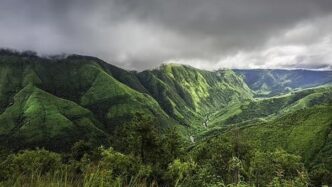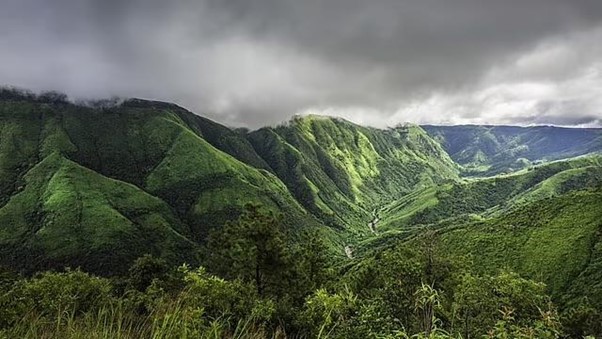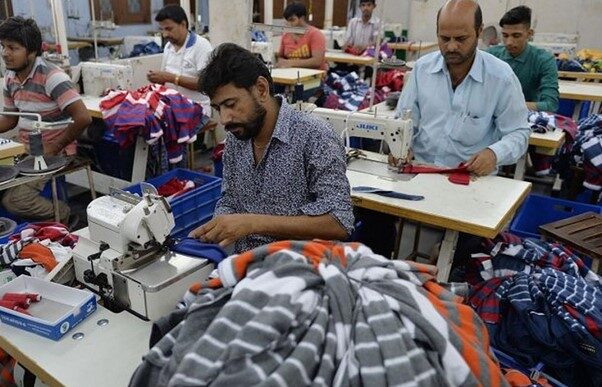
A Monument to the Monsoon
In a world first, Meghalaya—home to Mawsynram, the wettest place on Earth—is set to open the Rain Museum, an immersive tribute to the cultural, ecological, and spiritual significance of rain. With an investment of ₹35 crore, this groundbreaking initiative will blend science, art, and indigenous tradition to create a one-of-a-kind experience that honours rain’s role in shaping life in Meghalaya and beyond.
Announced by Meghalaya Tourism Minister Paul Lyngdoh, the museum’s construction is expected to begin post-monsoon season. Tenders have already been floated, with the project poised to become a landmark not only for India but for the world.
Why Rain Deserves a Museum
Rain holds a revered place in Indian life. It fuels agriculture, anchors festivals, and inspires art and folklore. Nowhere is this relationship more profound than in Meghalaya, where rain is more than a climate phenomenon—it is a sacred presence.
The upcoming Rain Museum will reflect this reverence through a series of interactive, educational, and cultural exhibits. From live rain simulation zones and artistic installations to climate change exhibits and a meteorological research centre in collaboration with ISRO and the IMD, the museum is designed to engage visitors of all ages.
But it’s not just about technology and science. The museum’s soul lies in its deep cultural narrative—one that tells the story of how rain is celebrated, worshipped, and woven into the lives of Meghalaya’s indigenous tribes: the Khasis, Jaintias, and Garos.
Rain in Myth, Ritual, and Identity
In Meghalaya, rain has long been viewed as a divine force. The Khasis believe rain is a gift from Lei U Blei, the Sky God. One well-known legend speaks of a woman who climbed Shillong Peak to pray for rain and end a drought, a tale still retold in Khasi villages.
The Jaintias interpret the first thunderstorm as a cosmic event—marking the separation of heaven and earth. The Garos view monsoon rains as a symbol of fertility, tied to their own creation story.
These beliefs are celebrated through colorful and sacred festivals like Behdienkhlam, Shad Suk Mynsiem, Megong, and Wangala. These events mark agricultural milestones, bringing communities together in song, dance, and prayer. Rain on these festival days is not a hindrance, but a blessing.
Language of the Rain: A Rich Oral Tradition
One of the most unique features of Meghalaya’s relationship with rain is how it permeates language. The Khasi language, for instance, includes specific words to describe different types of rainfall:
- Slap-boi-ksi – light rain with tiny droplets
- Slap-bniup-bniup – gentle drizzle
- Slap-bah – heavy, prolonged rainfall
This nuanced vocabulary reveals a deep environmental awareness passed down through generations. Oral traditions among the Garos and Jaintias also include rain-related myths, sacred water bodies, and stories of nature guardians, reinforcing a sense of respect and responsibility toward nature.
Sustaining Life, Shaping Livelihoods
In a largely agrarian state like Meghalaya, rain is critical for food security and livelihoods. It irrigates fields, feeds rivers and springs, and sustains biodiversity. Yet, this dependence on rain also brings vulnerability—especially in the face of climate change.
Unpredictable rainfall patterns, driven by global warming, are beginning to threaten long-established agricultural cycles. Extreme events such as flash floods and landslides—exacerbated by deforestation and unplanned development—have become more frequent.
Ironically, even in one of the world’s rainiest places, seasonal water scarcity is a growing issue. The Rain Museum will aim to highlight such paradoxes, prompting dialogue on sustainability, conservation, and adaptation.
Rain Museum: A Space for Reflection and Renewal
The Rain Museum in Mawsynram will not merely be a tourist attraction. It is envisioned as a living institution—one that educates, inspires, and instills a deeper appreciation for the natural world.
Key features will include:
- Live Rain Experience Zones – Simulations to feel and hear different intensities of rain
- Indigenous Art Installations – Showcasing how rain shapes creativity and craftsmanship
- Climate Education Galleries – Highlighting the science of monsoons and climate change impacts
- Cultural Archives – Documenting oral histories, rain songs, and ancestral rituals
- Meteorological Research Centre – Collaborating with national agencies to study rain patterns
By bridging modern science with ancient wisdom, the museum will serve as a cultural and environmental hub—both honoring rain’s past and shaping its future.
A Global First Rooted in Indigenous Wisdom
As the world grapples with climate extremes, Meghalaya’s Rain Museum arrives at a pivotal time. It reaffirms that cultural heritage and environmental stewardship are not separate, but deeply interconnected.
In celebrating rain, the museum is also celebrating the indigenous knowledge systems that have long known how to live in harmony with nature. These lessons—rooted in respect, balance, and observation—offer valuable insights for a climate-challenged future.
Whether you’re a traveler, student, scientist, or seeker of stories, the Rain Museum promises to be an unforgettable experience. A place where monsoon myths meet meteorology, and where raindrops become storytellers.
Final Thoughts
Meghalaya’s Rain Museum isn’t just a tribute to rainfall—it’s a celebration of life, land, and legacy. In honoring the rhythms of nature and the cultures that live by them, it reminds us that rain is not just a weather event, but a blessing, a teacher, and a way of life.

















